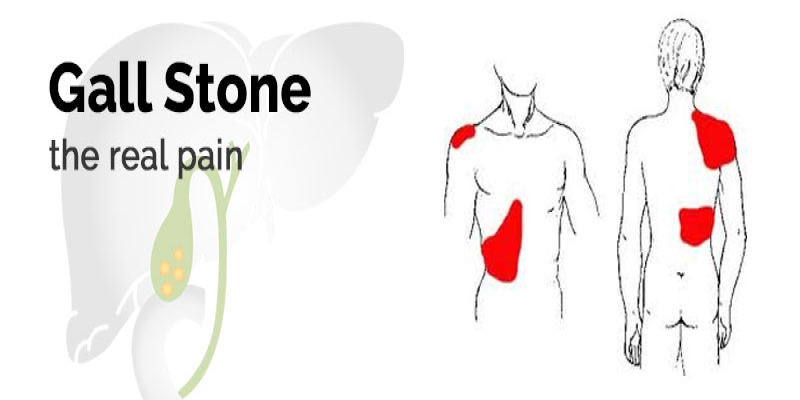What are The Different Treatment Options for Gall Bladder Stone?
2019-03-14 / RG STONE HOSPITAL / Gall Bladder Stone

Gallbladder is an important organ in our body. It has a major role to play because it helps to store bile, which is the substance is released by the liver and helps in the digestive process.
However, at times because of immobility of the muscles of gall bladder, the bile which is stored there gets crystallized and as result, gallstones are formed.
However, at times because of immobility of the muscles of gall bladder, the bile which is stored there gets crystallized and as result, gallstones are formed.
Gallstones are of various sizes. They can be very small like a salt grain or it can also be large as a table tennis ball.
Due to these gallstones, various ducts inside the organ get blocked and consequently, the gallbladder gets inflated.
In worst case scenarios, gallstones can pass into the main bile duct and as a result, it may cause serious inflammation or bile duct infection.
Due to these gallstones, various ducts inside the organ get blocked and consequently, the gallbladder gets inflated.
In worst case scenarios, gallstones can pass into the main bile duct and as a result, it may cause serious inflammation or bile duct infection.
If you are facing the problem of gallbladder stones, it is highly recommended that you opt for immediate treatment.
Let us discuss them in the coming section but before that have a look at those who are more vulnerable to it.
So what are the different treatment options available?
Let us discuss them in the coming section but before that have a look at those who are more vulnerable to it.
Who Are at More Risk of Gallbladder Stones?
We know how important it is to treat gallbladder stones and remove them from the body.
Here are some of the group of people who are more vulnerable to develop gallbladder stones in their system.
Here are some of the group of people who are more vulnerable to develop gallbladder stones in their system.
• Sex - Women are twice as likely as men to develop gallstones. Excess estrogen from pregnancy, hormone replacement therapy, and birth control pills increase cholesterol levels in bile and decrease gallbladder movement, which can lead to gallstones.
• Family History - Gallstones often run in families.
• Weight - Being even moderately overweight increases the risk for developing gallstones. Obesity is a major risk factor for gallstones, especially in women.
• Diet - Diets high in fat and cholesterol and low in fiber increase the risk of gallstones.
• Rapid Weight Loss - As the body metabolizes fat during prolonged fasting and rapid weight loss, such as “crash diets”. It can cause gallstones.
• Age - People over 60 years of age are more likely to develop gallstones than younger people. As people age, the body tends to secrete more cholesterol into bile.
• Cholesterol-Lowering Drugs - Drugs that lower cholesterol levels in the blood actually increase the amount of cholesterol secreted into bile. In turn, the risk of gallstones increases.
• Diabetes - People with diabetes generally have high levels of fatty acids called triglycerides. These fatty acids may increase the risk of gallstones.
These are the people who are much more vulnerable to be affected by gallbladder stones.
Now let us check the treatment options that are available to you.
?
Now let us check the treatment options that are available to you.
?
Treatment Options for Gall Bladder Stones
Here is a list of different treatment options available for gall bladder stones.
• Shock Waves - Small Gallbladder stones can be broken down with the help of shock waves it is also known as Extracorporeal Shock-wave Lithotripsy (ECSWL). This method is the most effective when the stones are less than 2cms in size. But most surgeons agree that stone removal techniques have an unacceptably high recurrence rate with non-operative measures.
• Cholecystectomy - Cholecystectomy may be done by open surgery or laparoscopic surgery. The gold standard treatment is ‘Laparoscopic Cholecystectomy’ under general anaesthesia. It is a safe procedure that involves 4 small holes only.
• Laparoscopic Technique - Laparoscopic Technique is the choice of treatment as it has Short-operating time, Fewer complications, Post-operative pain is lower and less medication is required, Excellent cosmetic results, Shorter hospital stay, Lower rate of wound infection, Early return to work, Comparable lower incidence of common bile duct (CBD) injuries.
All these procedures depend on the condition of the patient and other factors which will be determined by the doctors.
All these procedures depend on the condition of the patient and other factors which will be determined by the doctors.
Categories
Hernia Repair
Appendicitis
Piles
Urological Treatment
Hernia treatment
Enlarged Prostate (BPH)
Gall Bladder Stone
Urinary / Kidney Stone
Vitamins
Indian Health Care System
Exercise
Obesity
Female Urinary Incontinence
Single Incision Laparoscopic Surgery (SILS)
Kidney Cancer
Bladder Cancer
Ovarian cancer
Nephrology
Bariatric Surgery
Kidney Function Test
Female Urology
Radiation Therapy
Alcoholic Fatty Liver
Liver disease
Gastroenterology
Kidney Disease

